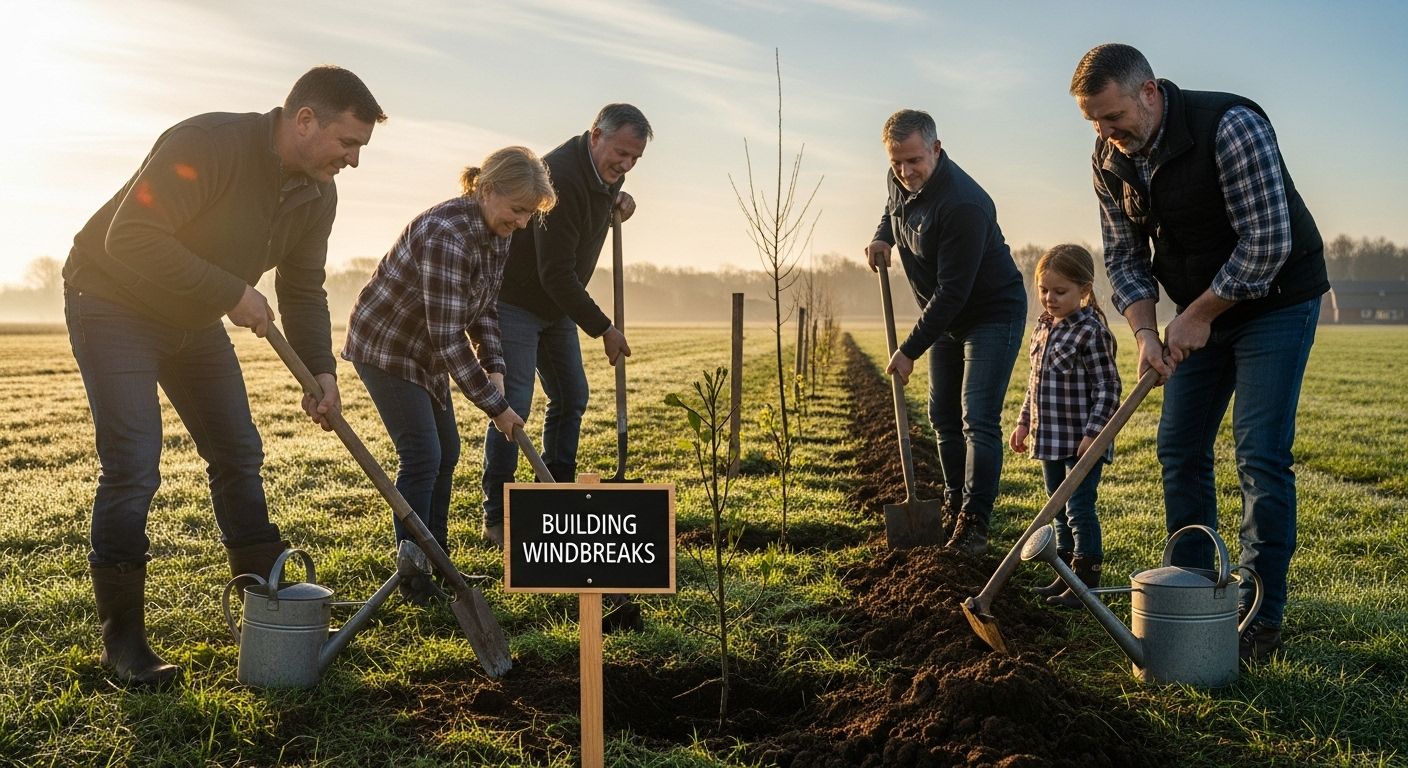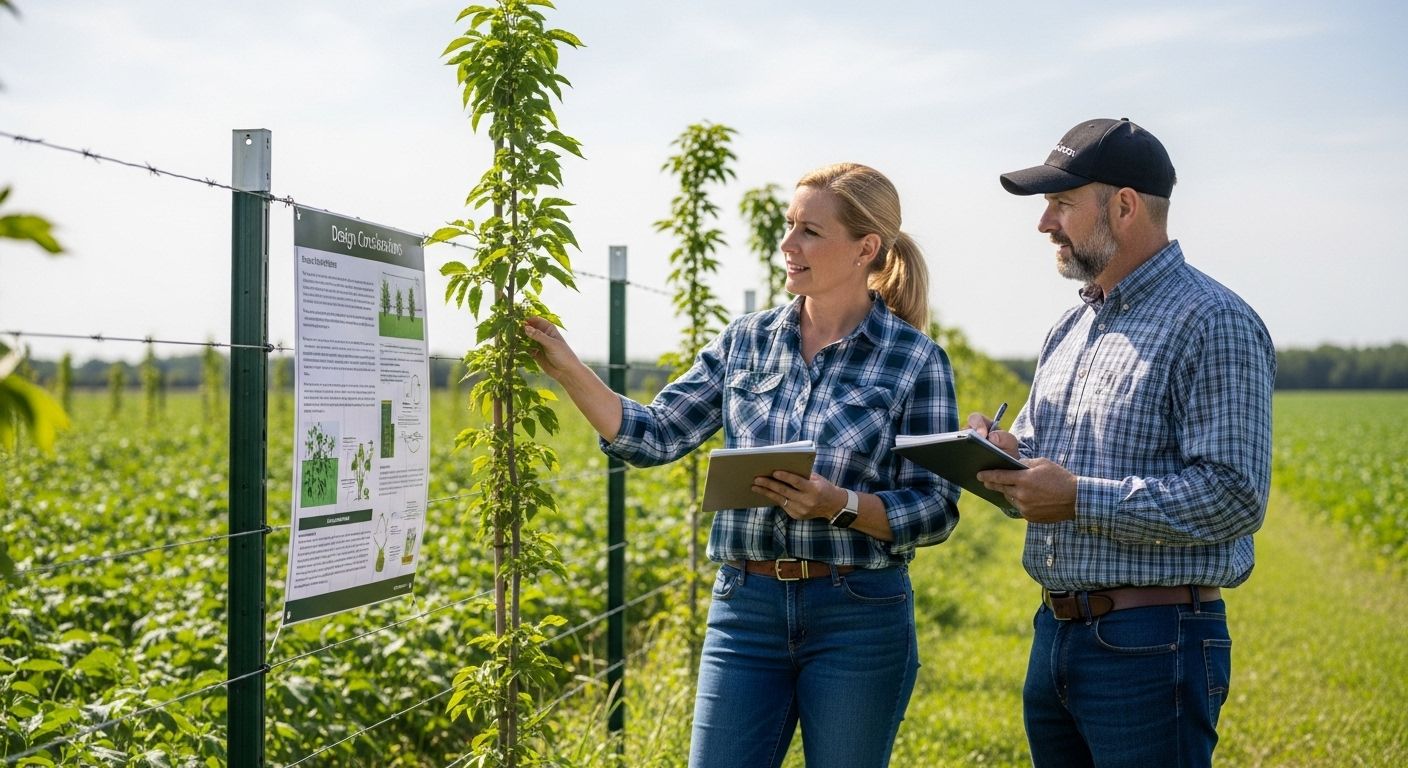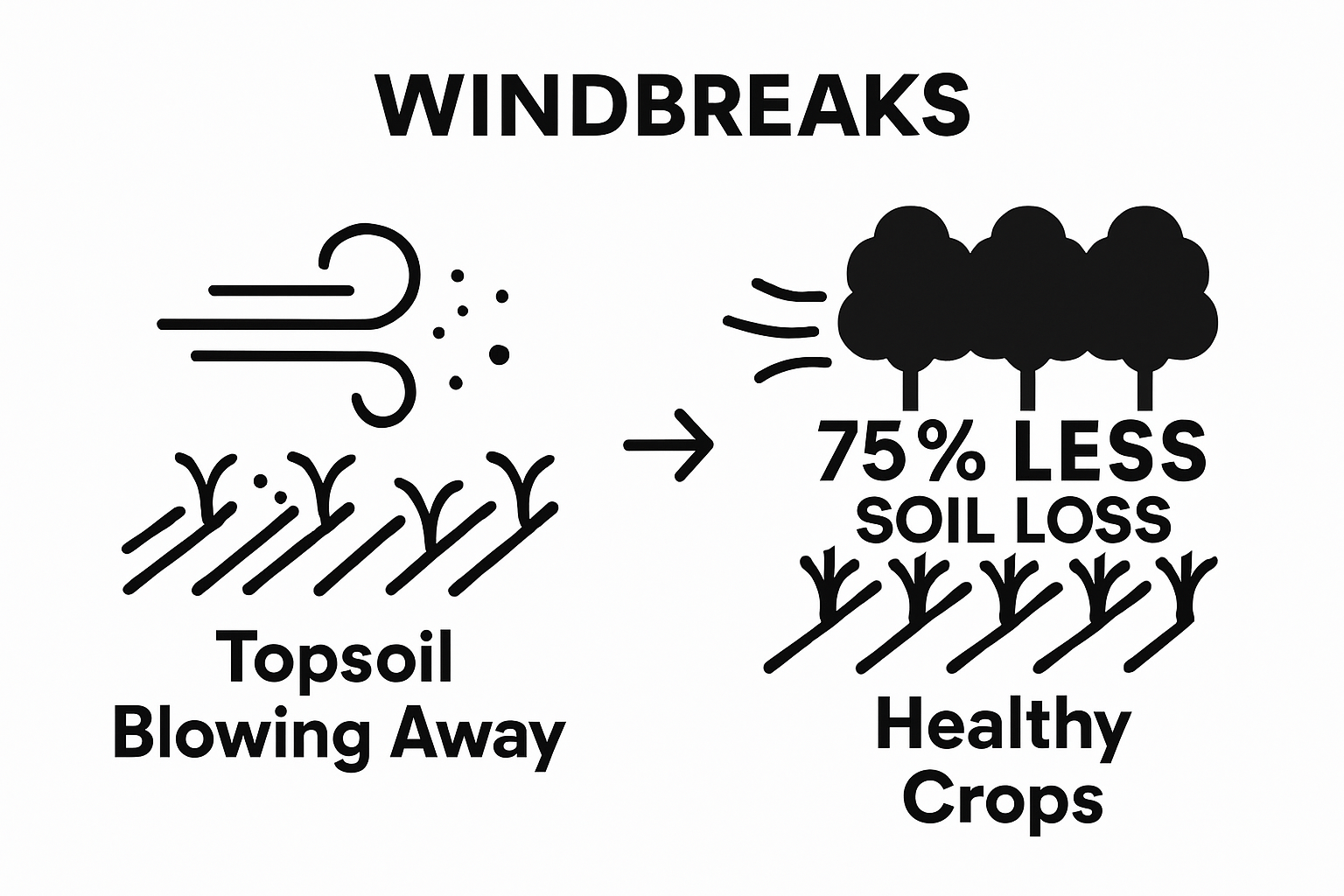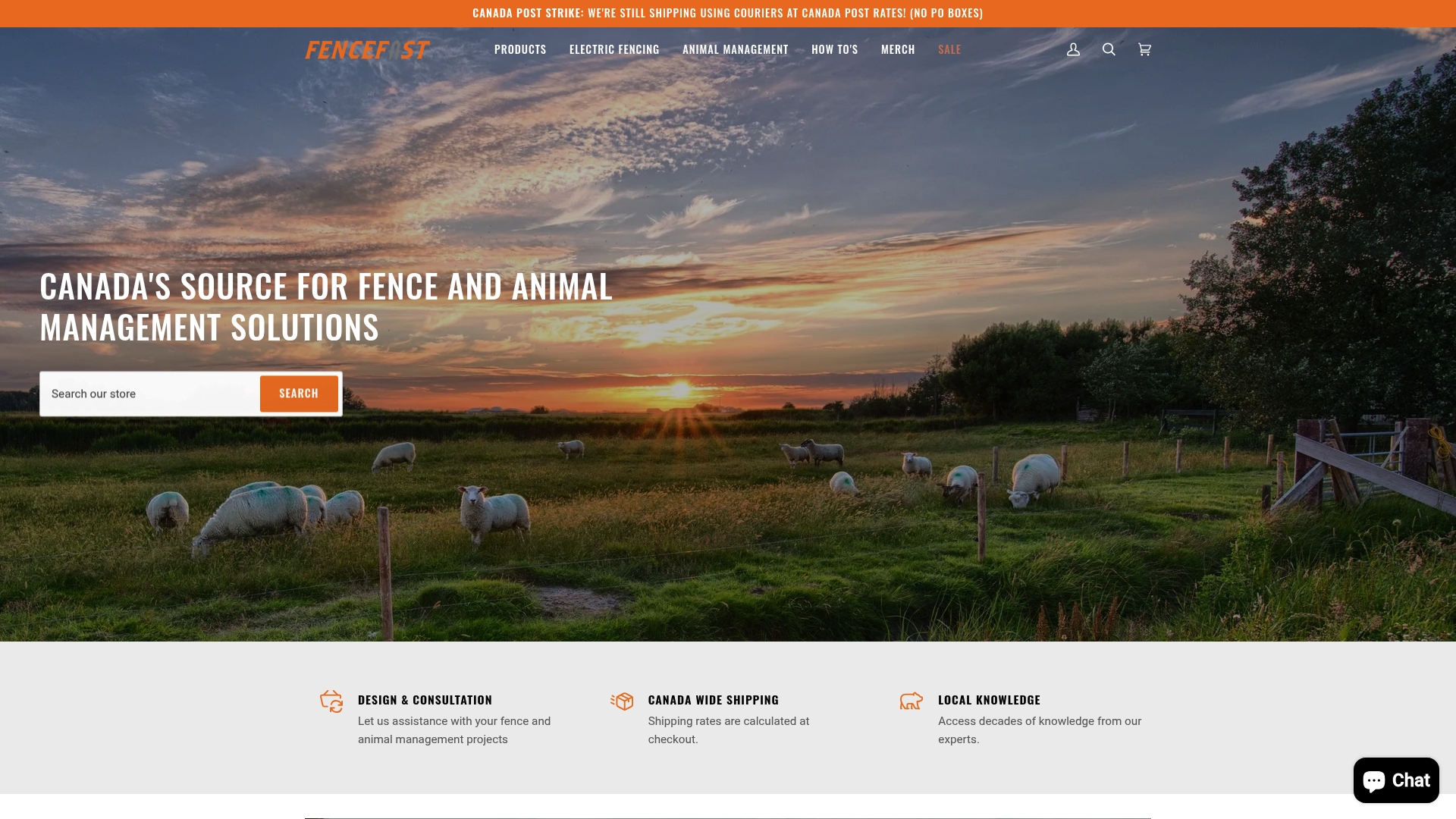
Farmers have a simple way to protect their fields from wind yet it delivers powerful results. By planting windbreaks, growers can cut wind erosion by up to 75 percent in vulnerable topsoil regions. Most people see windbreaks as just rows of trees or shrubs but there is much more going on under the surface. These living barriers turn harsh farmland into protected zones where crops, animals, and the entire ecosystem can thrive in ways that might surprise you.
Table of Contents
- What Are Windbreaks And Their Role In Agriculture?
- Why Building Windbreaks Matters For Land And Livestock
- How Windbreaks Function To Protect Farmland
- Key Elements And Design Considerations For Effective Windbreaks
- Real-World Examples Of Successful Windbreak Implementation
Quick Summary
| Takeaway | Explanation |
|---|---|
| Windbreaks reduce wind speed effectively | They create barriers that lower wind velocity, protecting crops, soil, and livestock from damage. |
| Increase soil moisture retention | Windbreaks help deposit snow and reduce evaporation, stabilizing moisture levels for better crop growth. |
| Support biodiversity and ecosystems | These structures provide habitats for wildlife and promote healthier ecosystems through enhanced interactions among species. |
| Improve livestock welfare | Windbreaks shelter animals, lowering cold stress and aiding in better health and productivity outcomes. |
| Long-term agricultural sustainability | Strategic windbreaks contribute to resilience against environmental changes, making farming practices more sustainable over time. |
What are Windbreaks and Their Role in Agriculture?
Windbreaks represent strategic landscape interventions designed to protect agricultural environments from wind’s destructive potential. These purposeful linear plantings of trees and shrubs serve multiple critical functions in agricultural settings, transforming how farmers manage environmental challenges.
The Fundamental Purpose of Windbreaks
At their core, windbreaks act as protective barriers that significantly reduce wind velocity across agricultural landscapes. By creating a physical obstacle to wind movement, these carefully designed plantings provide comprehensive protection for crops, soil, and livestock. Research from the United States Forest Service reveals that windbreaks deliver substantial economic, environmental, and community benefits beyond simple wind reduction.
Key protective functions of windbreaks include:
- Controlling wind erosion by reducing soil particle displacement
- Depositing snow uniformly across fields to improve moisture retention
- Creating microclimates that enhance crop growing conditions
- Providing shelter for livestock, reducing cold stress and improving animal welfare
Agricultural and Ecological Benefits
Windbreaks are not merely passive barriers but active contributors to agricultural ecosystem health. They support biodiversity by creating habitats for pollinators, beneficial insects, and wildlife. These living barriers also contribute to carbon sequestration, helping mitigate climate change while improving overall landscape resilience.
Designing effective windbreaks requires strategic planning. Optimal windbreaks maintain a barrier density between 35-60% during erosion periods, with spacing calculated as 5 to 20 times the mature height of the trees. This precision ensures maximum wind reduction and ecological effectiveness.
By integrating windbreaks, farmers transform their landscapes from vulnerable open spaces into protected, productive environments that balance agricultural productivity with ecological sustainability.
Below is a table summarizing the primary agricultural and ecological benefits provided by windbreaks, helping readers quickly grasp their multifaceted value in farming systems.
| Benefit | Description |
|---|---|
| Wind Erosion Control | Reduces soil particle displacement, protecting valuable topsoil from loss |
| Moisture Retention | Deposits snow and reduces evaporation, helping stabilize soil moisture for crops |
| Microclimate Creation | Moderates temperatures and wind, leading to improved conditions for plant growth |
| Livestock Shelter | Provides protection for animals from harsh weather, reducing stress and improving welfare |
| Biodiversity Support | Offers habitat for wildlife, pollinators, and beneficial insects, encouraging healthy ecosystems |
| Carbon Sequestration | Helps absorb atmospheric carbon dioxide, mitigating climate change impacts |
| Landscape Resilience | Strengthens ecosystems against environmental stressors for long-term productivity |
Why Building Windbreaks Matters for Land and Livestock
Building windbreaks transcends simple landscape design, representing a critical strategy for agricultural sustainability and animal welfare. These intentional barriers create transformative environmental conditions that directly impact land productivity and livestock health.
Economic and Productivity Impact
Windbreaks deliver substantial economic advantages by mitigating wind-related agricultural challenges. Research from the Natural Resources Conservation Service demonstrates that strategic windbreak implementation can significantly reduce operational costs and enhance farm productivity.
Key economic benefits include:
- Reducing wind erosion that leads to topsoil loss
- Decreasing irrigation requirements by minimizing moisture evaporation
- Protecting crops from wind damage and mechanical stress
- Increasing overall land use efficiency
Livestock Protection and Performance
For livestock, windbreaks are more than aesthetic landscape features they are critical infrastructure for animal welfare. By creating sheltered environments, windbreaks help animals maintain optimal body temperature, reduce energy expenditure, and minimize cold stress. This protection translates directly into improved animal health, reduced mortality rates, and enhanced reproductive performance.
When livestock experience less environmental stress, they demonstrate:
- Lower metabolic energy consumption
- More consistent weight gain
- Reduced susceptibility to weather-related health complications
- Enhanced overall immune system functioning
Ecological Resilience and Long-Term Sustainability
Beyond immediate agricultural benefits, windbreaks contribute to broader ecological resilience. These living barriers support biodiversity, create wildlife habitats, and help sequester carbon. By integrating windbreaks, farmers invest in landscape health that extends far beyond immediate production needs, creating sustainable agricultural ecosystems that can adapt to changing environmental conditions.
How Windbreaks Function to Protect Farmland
Windbreaks operate as sophisticated environmental engineering systems that manipulate wind dynamics to create protective agricultural microclimates.
These strategic plantings transform wind from a potentially destructive force into a manageable environmental element, providing comprehensive protection for farmland ecosystems.
Wind Velocity Reduction Mechanics
Research from Agricultural Engineering experts reveals that windbreaks function through precise physical interactions with wind currents. When wind encounters a strategically designed barrier, it experiences significant velocity reduction, creating complex airflow patterns that provide multiple protective benefits.
Key wind interaction mechanisms include:
- Vertical wind profile modification
- Turbulence generation that disrupts direct wind paths
- Gradual wind speed deceleration across the barrier
- Creating protected zones extending multiple times the barrier’s height
Soil and Crop Protection Dynamics
Windbreaks fundamentally alter soil microenvironments by reducing wind-induced erosion and moisture loss. By interrupting direct wind trajectories, these living barriers minimize topsoil displacement, preserve critical soil structure, and maintain crucial soil moisture levels. The resulting microclimate creates more stable growing conditions that support enhanced crop development and resilience.
Critical protective effects for agricultural landscapes include:
- Preventing wind-driven soil particle removal
- Reducing evaporation rates
- Moderating temperature fluctuations
- Creating zones of reduced mechanical stress on plant structures
Airflow Modification and Ecosystem Engineering
Beyond immediate wind reduction, windbreaks function as complex ecosystem engineers. They create nuanced environmental gradients that support biodiversity, modify local climate conditions, and establish intricate ecological interactions. By strategically interrupting wind patterns, these living barriers generate sheltered zones that support diverse plant and animal life, transforming agricultural landscapes into more resilient, productive ecosystems.
Key Elements and Design Considerations for Effective Windbreaks
Designing effective windbreaks requires a sophisticated understanding of landscape dynamics, plant biology, and environmental interactions. These complex systems demand precise planning and strategic implementation to maximize their protective and ecological potential.
This table outlines critical design and planning considerations for building effective agricultural windbreaks, supporting readers in understanding key elements for success.
| Design Element | Considerations and Importance |
|---|---|
| Plant Species Selection | Choose native, climate-adapted species with suitable height, growth, and root characteristics |
| Barrier Density | Maintain 35-60% density for optimal wind reduction during erosion periods |
| Row Configuration | Use single or multiple rows with varied plant heights for layered protection |
| Spacing | Calculate spacing as 5 to 20 times mature tree height for effective coverage |
| Orientation | Align windbreaks perpendicular to prevailing winds for maximum effectiveness |
| Maintenance | Plan for long-term care, ongoing management, and integration with surrounding ecosystems |
Plant Selection and Composition
Research from Agriculture Canada emphasizes that successful windbreaks depend on careful plant species selection. Not all trees and shrubs are equally suited to windbreak construction, requiring farmers to consider multiple ecological and agricultural factors.
Critical plant selection criteria include:
- Native species adaptability
- Growth rate and mature height characteristics
- Root system stability
- Resistance to local climate conditions
- Compatibility with surrounding agricultural ecosystems
Structural Configuration and Spatial Planning
Windbreak effectiveness relies on precise structural design that goes beyond simple tree planting. The configuration determines how effectively wind is intercepted, redirected, and dissipated across agricultural landscapes. Optimal windbreak design involves calculating precise barrier density, understanding wind patterns, and creating multi-layered protective zones.
Key structural considerations involve:
- Maintaining 35-60% barrier density
- Creating multiple row configurations
- Considering prevailing wind directions
- Calculating appropriate spacing between plantings
- Integrating diverse plant heights for comprehensive protection
Long-Term Maintenance and Ecological Integration
Successful windbreaks are dynamic living systems requiring ongoing management and strategic ecological integration. They represent long-term investments in agricultural infrastructure that evolve and adapt over time. Farmers must approach windbreak development as a continuous process of environmental stewardship, balancing immediate agricultural needs with broader ecosystem health considerations.

Real-World Examples of Successful Windbreak Implementation
Windbreak implementation represents a sophisticated agricultural strategy that translates theoretical principles into tangible landscape transformations. Successful case studies demonstrate how strategic windbreak design can revolutionize agricultural productivity and environmental resilience across diverse farming contexts.
Prairie Agricultural Restoration Projects
Research from the Prairie Agricultural Windbreak Initiative highlights remarkable windbreak interventions in challenging agricultural landscapes. In regions characterized by extreme wind conditions, carefully designed windbreaks have become critical infrastructure for sustainable farming practices.
Notable restoration project outcomes include:

- Reducing wind erosion by up to 75% in vulnerable topsoil regions
- Increasing crop yields through improved microclimate management
- Establishing wildlife corridors alongside agricultural productivity zones
- Creating sustainable land management frameworks
Livestock Production Transformation
Windbreak implementation has demonstrated profound impacts on livestock management strategies. Farmers have discovered that strategic tree and shrub plantings can significantly improve animal welfare, reduce environmental stress, and enhance overall agricultural efficiency. These living barriers create sheltered environments that directly contribute to livestock health and production performance.
Key livestock management benefits documented include:
- Reducing winter feeding costs through improved animal thermal regulation
- Decreasing livestock mortality rates
- Improving animal weight gain consistency
- Creating more stable reproductive environments
Ecological Restoration and Carbon Sequestration
Beyond immediate agricultural benefits, successful windbreak implementations represent critical ecological interventions. These living systems serve multiple functions simultaneously, transforming agricultural landscapes into complex, multifunctional ecosystems. By integrating native plant species and creating diverse habitat structures, windbreaks contribute to broader environmental restoration efforts while maintaining agricultural productivity.
Take Control of Windbreak Challenges and Strengthen Your Farm’s Future
Agricultural winds can threaten everything you work for. From soil erosion and crop damage to the stress your livestock face, building effective windbreaks is about more than planting trees. It is about safeguarding your livelihood and giving your animals and land the best conditions for success. The right fences and animal management tools help you fully realize the protective power of windbreaks for both your fields and your herds.

FenceFast.ca delivers farm-tested fencing materials and livestock management solutions that work seamlessly with windbreak strategies. Whether you need to strengthen perimeter barriers, create controlled grazing zones, or ensure secure enclosures for every species, you will find proven products alongside trustworthy advice. Visit FenceFast.ca to see how investing in the right equipment today can help you boost yields, protect animals, and bring long-term resilience to your farm. The best time to strengthen your windbreak system is now. Let us help you get started with solutions tailored for your land and livestock.
Frequently Asked Questions
What are the primary benefits of building windbreaks in agriculture?
Building windbreaks provides numerous benefits including reducing wind erosion, improving moisture retention, creating microclimates for better crop growth, and offering shelter for livestock, which enhances their welfare and productivity.
How do windbreaks affect soil health and crop yield?
Windbreaks protect the soil from wind-induced erosion, maintain moisture levels, and create stable growing conditions, all of which can lead to increased crop yields and improved soil structure over time.
What factors should farmers consider when designing windbreaks?
Farmers should consider plant species selection, barrier density, structural configuration, prevailing wind directions, and long-term maintenance needs to ensure the effectiveness of windbreaks in protecting their agricultural landscapes.
How do windbreaks improve livestock conditions?
Windbreaks help livestock by reducing environmental stress, which leads to better thermal regulation, improved weight gain, lower mortality rates, and enhanced reproductive performance, contributing to overall animal health and productivity.
